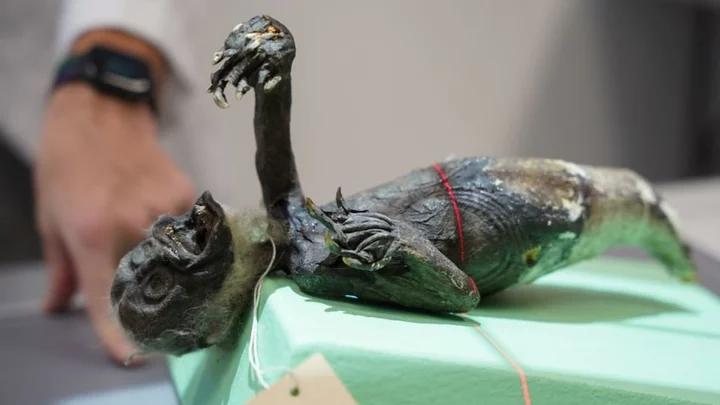
‘Mermaid mummy’ from Japan found to be a Frankenstein's mix of body parts
Frankenstein’s monsters aren’t just for Halloween, as a team of US scientists have recently discovered. The experts at Northern Kentucky University (NKU) were tasked with analysing the remains of a supposed mummified “mermaid”, and what they found was pretty gruesome. The mummy was brought to America from Japan more than 100 years ago after being donated it to the Clark County Historical Society in Springfield, Ohio. It arrived at the society in 1906 but documents supplied alongside the strange specimen suggest it dates back to the mid-1800s. This means that for some 170 years, the true identity of the wisened, 29-cm-long creature remained a mystery. However, thanks to modern technology, the team at NKU has finally worked out that the sinister-looking “siren” is, in fact, a ghoulish hybrid of monkey, fish and lizard. Joseph Cress, who led the project, told Live Science that he and his colleagues used X-ray and CT scans to investigate the creepy cadaver. "This allowed us to see [the mummy] in almost every dimension in the hopes to see what was inside it," he explained. They determined that that the “mermaid” consists of the head and torso of a monkey sewed onto the body of a fish, and its “hands” are the clawed legs of a lizard – most likely a Komodo dragon. The scans also revealed a pair of wooden stakes hidden inside the chimeric corpse – one running from head to tail and another across the shoulder blades — which were presumably inserted to keep the monster in one piece. Cress and his colleagues are currently trying to reconstruct a more detailed model of the mermaid and its individual components, according to Live Science. Once these models are complete, they plan to send them to zoos and aquariums to help confirm the different parts on a species level. However, jaw-dropping this specimen may be, it's not the only “mermaid” to be debunked in recent times. In March 2022, researchers analysed a similar example that was found in a hidden box in a Japanese temple. They also expected the creature, which was 30.5 cm long and dated back to the mid-1700s, to be a monkey-fish hybrid. However, tests conducted in February this year revealed that it was, in fact, predominantly made of cloth, paper and cotton. It had been painted with sand and charcoal and held together by metal pins, while various animal parts, including fish skin and mammal hair, had been stuck to it. Experts believe that the two “mermaids” were made to resemble "ningyo" — hideous fish-like creatures with human heads and sharp claws from Japanese mythology. According to legend, a nun named Yaobikuni lived for 800 years and retained the youthful appearance of a young woman, after eating a ningyo. Her immortality made the creatures a symbol of longevity, so it’s likely that fraudsters tried to recreate the mermaids to sell them to wealthy seekers of immortality. Still, at least the owners of these two examples didn’t make the mistake of trying to eat them. Sign up for our free Indy100 weekly newsletter Have your say in our news democracy. Click the upvote icon at the top of the page to help raise this article through the indy100 rankings
2023-11-01 19:28

Scientists believe close kilonova explosion could threaten all life on Earth
Scientists have worked out how close a neutron star collision would have to be to threaten all life on Earth, in a not-remotely-terrifying new study. The event, known as a kilonova, is among the most powerful and explosive in the known universe. It’s not quite as bright as a supernova – but we should still keep our distance. Haille Perkins, team leader and a scientist at the University of Illinois Urbana-Champaign, told Space.com: “We found that if a neutron star merger were to occur within around 36 light-years of Earth, the resulting radiation could cause an extinction-level event.” That’s about 212 trillion miles – which seems like quite a large danger zone. But we need not worry, apparently. Kilonovae are extremely rare and difficult to spot, because they happen so quickly. Scientists, including those from the University of Warwick, recently managed to observe one by using the James Webb telescope. The explosion first produces a blast of gamma rays which lasts for just seconds. If we got caught in one of those, it would fry us all rather quickly. That’s pretty unlikely because they go in two thin lines out from the centre of the blast. They also cause an afterglow of X-ray emissions in the surrounding dust and particles. If we’re within 16.3 light years of those, we’d be in trouble. But the worst bit is the cosmic rays (of course!) – energetic charged particles spreading out from the explosion in a bubble. If these hit Earth, they would strip the ozone layer and leave us vulnerable to ultraviolet rays for several thousand years. That would be a bummer because, again, we’d all die. Fortunately, kilonovae are so rare that we’re more likely to get hit by an asteroid, added Perkins. She said: “There are several other more common events like solar flares, asteroid impacts, and supernova explosions that have a better chance of being harmful.” That’s good then. New kilonova discoveries In the most recent kilonova, it was the gamma rays that alerted the astronomers to the fact something big was going down. Then, they got in touch with various telescopes and detectors to ask them to focus on the bit of the sky where the burst had come from, and bingo: kilonova. Here's what it looked like on the JWT's feed. One of the major discoveries from this one is that kilonovae produce an element called tellurium, a relatively rare element on Earth. They also worked out where the two neutron stars came from: a spiral galaxy about 120,000 light years away from the location of the final explosion. That’s about the diameter of the Milky Way, and just a little further away than the mere 36 light year danger zone, then. But it’s food for thought nonetheless, eh? How to join the indy100's free WhatsApp channel Sign up to our free indy100 weekly newsletter Have your say in our news democracy. Click the upvote icon at the top of the page to help raise this article through the indy100 rankings.
2023-11-01 00:27
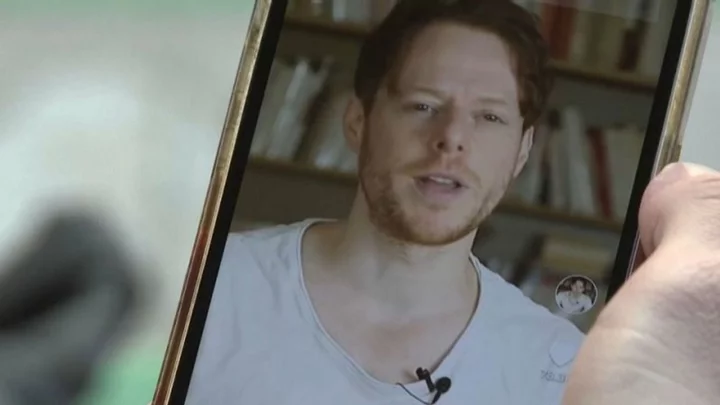
Scientist claims that humans have ‘no free will’ after decades of research
Human beings are fascinating creatures and one of the oldest philosophical debates is over whether people truly have free will or not. For millennia, scientists have debated over whether free will is simply an illusion of the mind and is a concept that doesn’t even exist, or, if our species naturally possess it. Some experts, such as the philosopher Bernardo Kastrup, argue that we do have free will. He defined it as existing “if our choices are determined by that which we experientially identify with”. Kastrup claimed that his “tastes and preferences” are “consciously felt by” him, thus the choices he makes are “determined by these felt tastes and preferences”. Essentially, Kastrup argues, we are able to choose what action to perform and this gives humans a level of free will. On the other hand, neurobiologist Robert Sapolsky from Stanford University believes humans don’t have any free will, after studying the subject for “decades”. In his book Determined: A Science of Life Without Free Will, Sapolsky argues that almost all of our behaviour as humans is beyond our own conscious control. He argued: “The world is really screwed up and made much, much more unfair by the fact that we reward people and punish people for things they have no control over. “We’ve got no free will. Stop attributing stuff to us that isn’t there.” Sapolsky believes that behaviour that we believe originates from free will is actually related to your environment, body, upbringing and genes. Speaking on the CultureLab podcast by New Scientist, Sapolsky explained: “In terms of my orientation, my basic approach is you look at a behaviour and someone has just done something that’s wonderful or awful or ambiguously in-between or in the eyes of the beholder, but some behaviour has happened, and you ask, 'Why did that occur?' and you’re asking a whole hierarchy of questions.” He continued explaining that the prompts to our behaviour could include, “which neurons did what, 10 milliseconds before” and may even originate from “this morning’s hormone levels” and the impact this has on your sensitivity levels in the brain. Additionally, behaviour, he argues can determined by prior trauma and even go back to the “childhood and foetal environment” and our individual genes. To summarise, he argued: “If you’re talking about genes, by definition, genes and behaviour, by definition, you’re talking about evolution and you’re talking about neurobiology and genetic variance and neuronal function. “If you’re talking about, you know, early trauma in life, you’re talking about epigenetics and you’re talking about adult propensity. “So, they’re all one continuous seam of influences, and when you look at it that way, there’s not a damn crack anywhere in there to shoehorn in a notion of free will.” Sign up to our free Indy100 weekly newsletter How to join the indy100's free WhatsApp channel Have your say in our news democracy. Click the upvote icon at the top of the page to help raise this article through the indy100 rankings.
2023-10-31 23:28

Fortescue Buoyant on China Iron Ore as It Advances Green Pivot
Chinese demand for Australian iron ore will remain strong despite the nation’s disappointing post-pandemic recovery, according to Fortescue
2023-10-31 11:19

Record-Breaking Weather in 2023 Shows Impact of Climate Change
This year broke records in all the wrong ways. That’s the chilling conclusion of a special report on
2023-10-31 04:50

One year on: A timeline of Elon Musk's farcical first year as Twitter/X owner
It’s hard to remember a time where Twitter didn’t have Elon Musk’s fingerprints all over it. But it was on 28 October 2022 that Musk took over the social media platform after purchasing it for a whopping $44bn. In the months that followed, the company changed dramatically - both publicly and behind the scenes - and for many of us, our relationship with the app has never been the same. Here’s everything Elon Musk has done since buying Twitter. Kicked things off with a dad joke “Let that sink in…” Yes, he really did this. Made half of the staff redundant In November, Twitter announced that it was laying off half of its workers – a cut of around 3,740 jobs. “Twitter has had a massive drop in revenue, due to activist groups pressuring advertisers, even though nothing has changed with content moderation and we did everything we could to appease the activists. Extremely messed up! They’re trying to destroy free speech in America,” Musk wrote at the time. "Unfortunately there is no choice when the company is losing over $4M/day," he tweeted. He would also go on to fire all of Twitter HQ's janitors, and issue a childish response to more than 775 discrimination cases against Twitter. Then publicly humiliated an employee who asked if he'd been sacked Musk was forced to apologise after a humiliating exchange in which he appeared to mock a disabled Twitter worker. Days after having access to his work computer cut and following numerous unanswered emails, one worker was forced to directly tweet Elon Musk asking him a seemingly straightforward question: had he been sacked? Rather than answer it, or get his HR team to do so, Musk decided to publicly put the man through the wringer – subjecting him to a brutal tweet exchange which included a pair of “rolling on the floor laughing” emojis. The thread has been branded “disgraceful” by thousands of users, who have condemned Musk as the “worst boss ever”. In the original tweet, senior product designer Halli Thorleifsson wrote: “Dear [Elon Musk], 9 days ago the access to my work computer was cut, along with about 200 other Twitter employees. However, your head of HR is not able to confirm if I am an employee or not. You've not answered my emails. Maybe if enough people retweet you'll answer me here?” The platform’s infamous boss replied curtly: “What work have you been doing?” before proceeding to engage in a back-and-forth that reads like a live job interview, with questions including: “What changes did you make to help with the youths?” and infantile comments like: “Pics or it didn’t happen”. The Twitter boss later said that he had received bad information about the situation, and had a video call with the affected staff member to apologise. The Twitter Blue mess On 30 October, Musk took to Twitter to share that the "whole verification process is being revamped". While a blue tick on Twitter used to help limit impersonation and prove the validity of tweets from high-profile individuals such as journalists, Musk decided he didn't like that idea and made the platform's paid subscription option - Twitter Blue - include the coveted verification icon. Those who didn't want to pay a regular fee to keep their blue tick eventually lost it in April this year. Got really petty about his social media competitors So it wasn't long before people were considering jumping ship for rival social media platforms - one of the most popular sites at the time of Musk's takeover being that of the decentralised platform, Mastodon. Except, Musk seemed to catch on to people fleeing Twitter and sharing their Mastodon links on the app, as the platform suddenly stopped allowing users to post URLs from the other site. Embarrassing. In April this year, he also blocked Twitter embeds on Substack, after they rolled out a feature called 'Notes' which bore a striking resemblance to his platform, and in July he threatened to sue Instagram's text-based app Threads. Reinstated the Twitter accounts of terrible people Republican congresswoman Marjorie Taylor Greene, former president Donald Trump, psychologist Jordon Peterson, Kanye "Ye" West and "misogynistic" influencer Andrew Tate were all allowed back onto the platform towards the end of November after they were previously banned from Twitter for Terms of Service violations. For example, Trump was banned following the January 6 insurrection, while Peterson was banned over a transphobic comment made about trans actor Elliot Page. Ye, meanwhile, was previously suspended for antisemitic tweets, before Musk banned him again following him tweeting a swastika inside the Star of David. He was allowed back on Twitter eight months later, in July. 'The Twitter Files' non-story In December, Musk amplified reporting from Matt Taibbi dubbed "The Twitter Files" which was supposed to expose political influence over Twitter and the social media platform's partisan management, but instead just revealed a perfectly legitimate request from the Biden presidential campaign team to remove pornographic images of Hunter Biden. The ElonJet saga Then there was all the drama around ElonJet, an account managed by Jack Sweeney while studying at the University of Central Florida which tracked Musk's use of his private jet using publicly available flight information. 'Free speech absolutist' Musk had offered the account owner $5,000 in early 2022 to take down the account, but went further when he was handed the 'keys' to Twitter, as he suspended the account outright. It later returned, but with a 24-hour delay. Sweeney would eventually troll Musk by joining major rival, Threads. Temporarily banned a load of journalists In scenes related to the ElonJet situation, reporters from outlets such as CNN, the New York Times and The Washington Post were suspended from Twitter, with Musk writing: "[The] same doxxing rules apply to 'journalists' as to everyone else." When one journalist was able to challenge Musk on the bans, he reacted totally rationally by temporarily binning the live audio feature, Twitter Spaces. The poll which ousted him as Twitter CEO In December, amid continued scrutiny over his management of Twitter, Musk posted a poll on his future as CEO of the company, allowing users to determine his fate. He lost. Musk would later claim his dog was calling the shots at Twitter, before hiring NBCUniversal advertising chair Linda Yaccarino in May. Divided the home page into 'For You' and 'Following' One of the bigger changes to the site itself came in January when an update saw the timeline split into two with ‘For You’ and ‘Latest’ feeds. A thread from Twitter Support in January read: “See the tweets you want to see. Starting today on iOS, swipe between tabs to see Tweets recommended ‘for you’, or tweets from the accounts you’re ‘following’. “The ‘For You’ and ‘Following’ tabs replace ‘home’ and ‘latest’ and will be pinned to the top of your timeline so you can easily switch between them. Swipe to switch timelines instead of tapping the [stars] icon.” The Tesla and SpaceX owner also implemented a "view count" on tweets to let others know how many times a post has been seen. This follows in the footsteps of the video model, where fellow tweeters are shown how many views a video has accumulated. One of the stranger moves also saw him introduce a marker that lets people see how many times a post had been bookmarked. So. Many. Outages. They got so bad, in fact, that Musk admitted in March that the site is "brittle". In July, things broke some more to the extent that the owner had to implement a 'reading limit' on tweets. Implementing a bizarre auto-reply from Twitter's press inbox In March, it started sending poop emojis. We wish we were joking. Pathetic name changes The Twitter CEO switched the site’s usual logo featuring the blue bird to the Doge meme featuring a Shiba Inu named Kabosu in April. The change led to Dogecoin prices surging by 33 per cent. It seemed like a very random decision, but it turns out he’s had the idea for a pretty long time. Back in 2022, Musk engaged with Twitter user @WSBChairman, who said on March 26 that he should “just buy Twitter… and change the bird logo to a doge”. In the same month, he also removed the 'w' from the Twitter sign outside Twitter HQ to spell... well, you know exactly what it spells... Cheesing off bereaved families In May, Musk announced a 'purge' of inactive accounts, angering those who had loved ones who have since passed away, for whom their Twitter accounts are a way of remembering them. The Elon Musk vs Mark Zuckerberg cage fight (which is yet to happen) Seeing the Meta owner as a new competitor after buying out a social media platform, Musk challenged Zuckerberg to a cage fight, which Zuck - who has won a jiu jitsu competition - accepted, but the fight has not actually taken place. Disappointing. The actual name change Oh, sorry, have we been using 'Twitter' to refer to Musk's app? We mean X. Musk rebranded it to a single letter in July, though many still people still refer to it as its old name. Oops. Actually charging people to use X In more recent developments, Musk has even gone so far as to charge people for the privilege of joining his dysfunctional social media platform. Earlier this month it was announced that new users in New Zealand and the Philippines will have to cough up $1 (£0.82) a year to access key features such as tweeting, retweeting, liking posts and replying. 'Illegal content and disinformation' over Israel-Hamas war Now, as the Israel-Hamas conflict continues, Musk has been criticised for his platform allowing disinformation to run rife amid the war, to the point that the European Union - more specifically, European Commissioner Thierry Bretan - wrote a letter to the business owner warning him that his site is "being used to disseminate illegal content and disinformation". We can't say we're looking forward to another year of Musk's rule... Sign up to our free Indy100 weekly newsletter How to join the indy100's free WhatsApp channel Have your say in our news democracy. Click the upvote icon at the top of the page to help raise this article through the indy100 rankings.
2023-10-30 03:49

Mysterious holes discovered on the outside of the International Space Station
If there’s one thing astronauts don’t want to face when out in the endless expanse of space, it’s signs that their station is being sabotaged. And yet, cosmonauts Oleg Kononenko and Nikolai Chubwere forced to face a strange phenomenon during a spacewalk last week. The pair exited the International Space Station (ISS) on Wednesday to fix a radiator which had sprung a leak. And while they were out, they were met by a close encounter of a very strange kind. Inspecting the source of the leak during their outing, Kononenko reported seeing a number of holes on the radiator panel. "The holes have very even edges, like they've been drilled through," he told Moscow Mission Control, according to Space.com. "There are lots of them. They are spread in a chaotic manner." The cosmonauts were given tissues and cloths to soak up any fluid that had seeped out of the radiator, with the pool of liquid coolant described as a growing “blob”. However, Kononenko got so close to the “blob” that one of his tethers became contaminated. This meant that it had to be bagged up and discarded outside the ISS before the cosmonauts could go back inside. The external radiator was mounted on the outside of Russia’s Nauka module – home to a multipurpose laboratory – which was launched in 2021. It was used as a backup to another radiator which regulates the temperature inside the lab. Kononenko and Chub closed a number of valves to cut off the external radiator from its ammonia supply, and it’s believed that the “blob” formed from residual ammonia that was disturbed when the valves were being shut. The toxic liquid certainly wouldn’t have been welcome on board the space station, hence why the two colleagues embarked upon their spacewalk armed with cloths to wipe down their spacesuits and tools. Russian engineers on the ground will use the data they collected to further investigate the cause of the leak and figure out how to fix the radiator. The question now is will they be able to work out where those mysterious little holes came from? Sign up for our free Indy100 weekly newsletter Have your say in our news democracy. Click the upvote icon at the top of the page to help raise this article through the indy100 rankings
2023-10-29 23:48
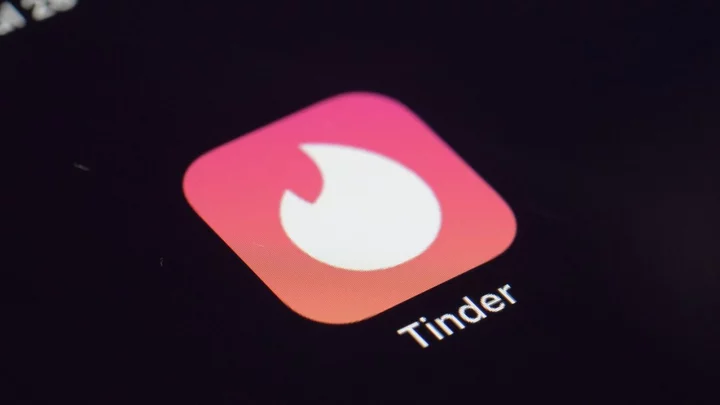
Tinder's new feature lets friends and family pick your dates
Tinder has introduced a feature that allows friends and family to take full control of your dating life – well, kind of. Dating debriefs with friends are a given with 75 per cent of singles admitting to discussing their dating life several times a month. Now, with Tinder Matchmaker, the platform is giving your nearest and dearest a say in the matter by allowing them to take over your profile and check out hopeful potentials. It works by inviting others, regardless of whether they have a Tinder profile or not, to view and suggest dates. But ultimately, the main user has the final say. "For years, singles have asked their friends to help find their next match on Tinder, and now we're making that so easy with Tinder Matchmaker," Melissa Hobley, Chief Marketing Officer at Tinder said. She continued: "Tinder Matchmaker brings your circle of trust into your dating journey and helps you see the possibilities you might be overlooking from the perspective of those closest to you." The popular dating app has partnered with rapper Coi Leray to bring the feature to life. "Handing your phone over to the friend group was the original vibe check. Obviously you want your friends to like whoever you’re crushing on, and Tinder Matchmaker is a fun way to get the bestie seal of approval even before the match," the 'Players' rapper said. Intrigued? Here's how to try out Tinder Matchmaker for yourself: A Tinder Matchmaker session can be started directly from a profile card, or within app settings. Users can share their unique link with up to 15 friends in a 24 hour period. After following the link, the matchmaker can either log in to Tinder or continue as a guest (after completing an age verification prompt and agreeing to Tinder’s terms as outlined). Matchmakers have 24 hours to play cupid before the session expires, where they can recommend profiles for the Tinder user but won’t be able to chat or send messages on their behalf. Once the session expires, Tinder users will have the opportunity to review the profiles their matchmakers’ Like for them. Profiles that received a Like from a matchmaker will be marked as a “recommendation” (profiles sent a Nope won’t change). The Tinder user still makes the final call on who to Like - but now knows who their friends are rooting for. How to join the indy100's free WhatsApp channel Sign up for our free Indy100 weekly newsletter Have your say in our news democracy. Click the upvote icon at the top of the page to help raise this article through the indy100 rankings.
2023-10-27 18:25

Scientist discovers oldest water on Earth and drinks it
A scientist who found the oldest water ever discovered on Earth decided the best course of action was, of course, to drink it. Professor Barbara Sherwood Lollar was leading a team of geologists studying a Canadian mine in 2016 when she made the remarkable discovery. The flowing water about three kilometres below the surface was between 1.5bn and 2.6bn years old, according to tests, making it the oldest water found on Earth. “When people think about this water they assume it must be some tiny amount of water trapped within the rock,” said Prof Sherwood Lollar. “But in fact it’s very much bubbling right up out at you. These things are flowing at rates of litres per minute – the volume of the water is much larger than anyone anticipated.” Upon tasting the ancient water, she found that it was “very salty and bitter” and “much saltier than seawater”. That was an encouraging sign, because saltier water tends to be older. In this case, where the water has been ageing for billions of years, it is hardly surprising. “If you’re a geologist who works with rocks, you’ve probably licked a lot of rocks,” said Sherwood Lollar. Her team also found that life had once been present in the water, by looking at the sulphate – the composition of salts – in it. “We were able to indicate that the signal we are seeing in the fluids has to have been produced by microbiology – and most importantly has to have been produced over a very long time scale. “The microbes that produced this signature couldn’t have done it overnight. “This has to be an indication that organisms have been present in these fluids on a geological timescale.” Fortunately, the scientist had no terrifying sci-fi movie-esq reaction to drinking the ancient water, and lived to tell the tale. The paper was published in Nature in 2016. How to join the indy100's free WhatsApp channel Sign up to our free Indy100 weekly newsletter Have your say in our news democracy. Click the upvote icon at the top of the page to help raise this article through the indy100 rankings.
2023-10-27 00:22
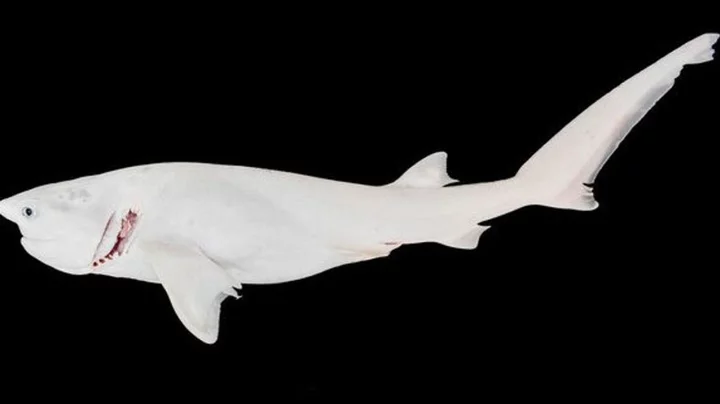
Scientists have discovered a ghost-white shark with a rare condition
Scientists have discovered a ghost-white shark with a rare condition. The predator was accidentally hooked by fishermen dedicated to catching sole. They were working from the coastal area of Los Chimus in Peru and informed authorities of the find. At the time of its capture, the shark had injuries to its gill slits as a result of being caught up in the net last month. The marine animal was transferred to the Peruvian Institute of the Sea (IMARPE) in Chimbote to undergo tests. Scientists discovered that the shark had leucism, which causes partial loss of pigmentation. The condition differs to albinism, which is a complete lack of melanin - a substance in the body that produces hair, eye and skin pigmentation. Albinos often have pink or red eyes but while leucism often makes an animal’s skin white, it does not affect their eye colour. IMARPE said this is the first known case of a shark in Peruvian waters having this condition. The fish was a young female that measured 89cm in length. Sexual maturity in females takes place when they are around 220cm in length. The predatory species sits high on the trophic food chain and mostly feeds on other sharks, rays, cetaceans and sea lions. Broadnose sevengill sharks are known to hunt in packs to bring down large prey. They are recognisable by their seven gill slits as most shark species have five. Sign up for our free Indy100 weekly newsletter How to join the indy100's free WhatsApp channel Have your say in our news democracy. Click the upvote icon at the top of the page to help raise this article through the indy100 rankings
2023-10-26 21:27
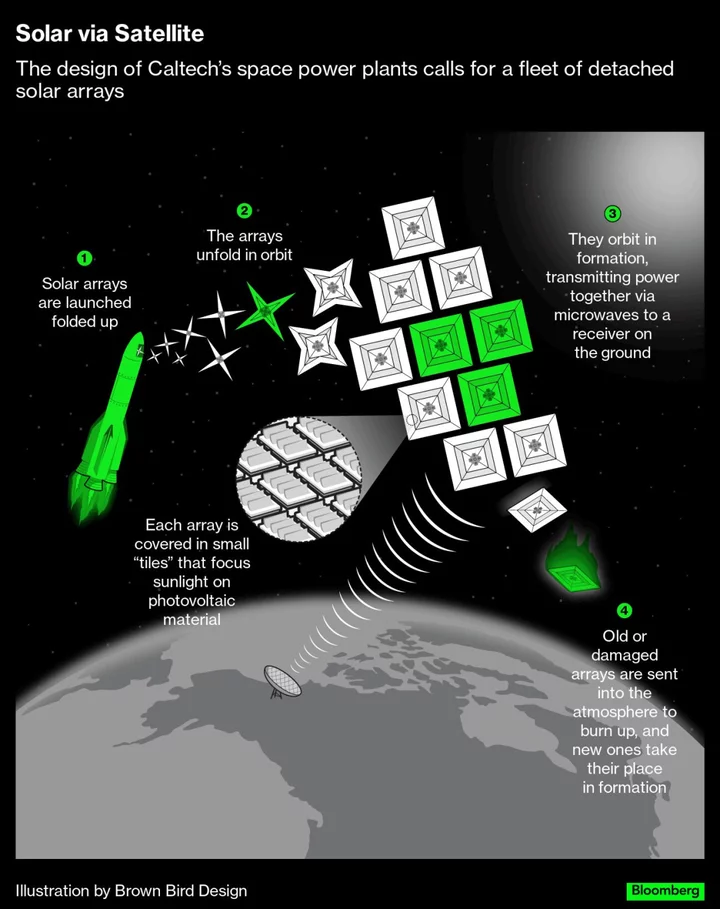
Beam Solar Energy From Space? These Scientists Achieve a Breakthrough
Even by the standards of the Space Race, the idea seemed bold, maybe a bit crazy. In 1968,
2023-10-26 18:46
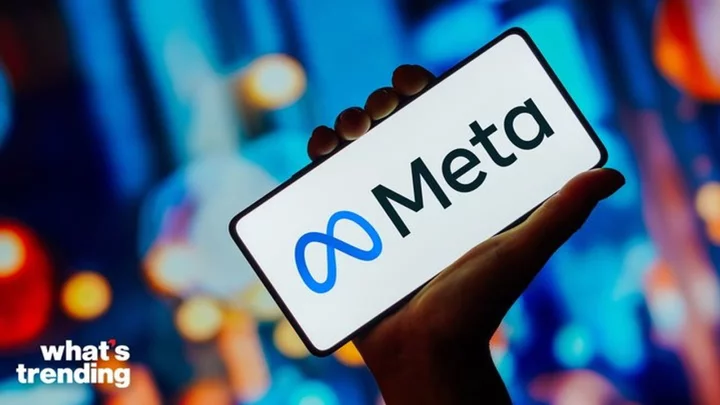
Meta is being sued by 41 states over ‘addictive’ content allegedly harmful to children
Mark Zuckerberg's Meta is facing lawsuits from 41 states alleging there are addictive features aimed at hooking young users. The filings allege that Meta knowingly uses features on their platforms Instagram and Facebook to pull in and addict children. States are also claiming that Meta's algorithms were designed to coerce children into harmful content with features like "infinite scroll" and persistent notifications hoooking young users to continue using the app. Meta has been accused of violating federal privacy laws for children and consumer protection laws. The 233-page joint complaint obtained by Deadline, states: "Research has shown that young people's use of Meta's Social Media Platforms is associated with depression, anxiety, insomnia, interference with education and daily life, and many other negative outcomes. "Nonetheless, Meta has continued to deny and downplay these harmful effects to the pubic and to promote its Platforms as safe for young users." The complaint also said that the company's "motive is profit, and in seeking to maximise its financial gains, Meta has repeatedly misled the pubic about the substantial dangers of its Social Media Platforms." Weighing in on the lawsuit, a Meta spokesperson said: "We share the attorney general's commitment to providing teens with safe, positive experiences online, and have already introduced over 30 tools to support teens and their families. We're disappointed that instead of working productively with companies across the industry to create clear, age-appropriate standards for the many apps teens use, the attorneys general have chosen this path." In May, U.S. Surgeon General Vivek Murthy called social media a "profound risk" for youth and encouraged parents to restrict their children's access to it. Sign up to our free Indy100 weekly newsletter How to join the indy100's free WhatsApp channel Have your say in our news democracy. Click the upvote icon at the top of the page to help raise this article through the indy100 rankings.
2023-10-25 17:27
